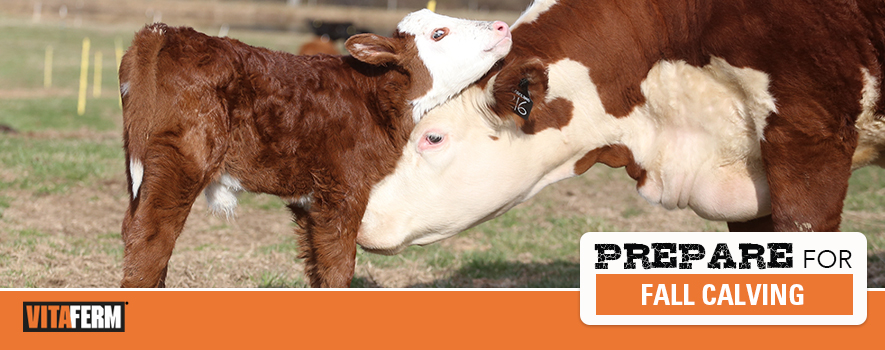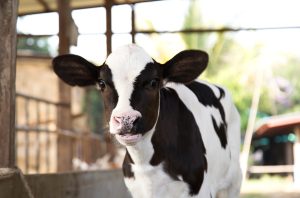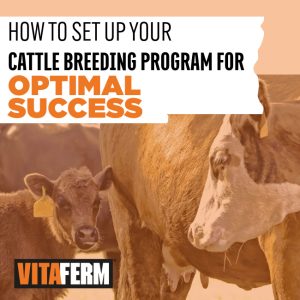
Fall calving cows are known to calve earlier than expected. With this year’s soaring temps, those calves might even have arrived earlier than usual. Hopefully you were prepared for your fall-calving cows; if not, here are a few tips and reminders.
The Benefits of Fall Calving
There are definite benefits to fall calving. A key advantage is that cows will spend their last days of gestation grazing summer pastures and will typically calve at a higher body condition. Keep their body condition score (BCS) in mind when developing a feeding program for those lactating mama cows.
Other advantages include more manageable feed costs. Resources available in the fall like cool-season grasses and crop residues/aftermath that is available post-harvest are more affordable. Additionally, grazing situations like cover crops and winter wheat might be an option, depending on the location where you’re operating.
More marketing opportunities generally exist if you fall calve. If you calve in both the spring and fall, your bulls can cover more cows over two breeding seasons. Fall-born calves weaned in the spring can be retained through the feedlot or you can graze them on your own grass. Marketing opportunities are again dependent on location.
Mother Nature can be more tolerable for fall-calving herds. Calves won’t suffer from frozen ears, tails or hypothermia. Weather patterns are typically more predictable in the fall. The cooler temperatures are more appealing for rebreeding – both for semen production in the bull and fertility in the female.
The Disadvantages of Fall Calving
Although the list of benefits is plentiful, there are also challenges that come with fall calving. You might not have frozen ears or tails, but especially with this year’s heat, you can battle temperatures of the extremes. Calves can get overheated and run fevers with the heat indexes that many regions of the country experienced in late August.
Flies are another challenge that producers face with fall calving. These little pests can cause big problems for a newborn calf. Biting flies like stable and horn flies are especially attracted to the embryonic fluid on newborn calves. They will gather on their toplines or around their naval and bite away at the fresh flesh. If fly populations are heavy, this can result in death. A good mother will get the calf cleaned off promptly; otherwise, you need to keep a close eye on your calf for bites.
Prepare Proactively for Fall Calving
Calving time is always exciting, so make sure you are ready for your fall calves to arrive. As mentioned earlier, it is normal for the fall calves to come early. Start checking on the cows about two weeks before due dates, especially in the heat.
Provide plenty of shade for your cows to calve under – either natural or man-made structures so the cows and calves are not out in direct sunlight. It is not necessary to calve indoors, as that will typically not offer enough airflow. That is where sickness occurs. Also try to keep the area clean and dry to help control flies.
Provide plenty of fresh, clean, cool water for your cows. Labor, delivery and beginning lactation is stressful. She is going to need more water than normal to keep hydrated and provide adequate nutrition for her new calf.
It is easy for a calf to get overheated, especially in the late summer and early fall days. The normal body temperature of calves is about 101.5. If your calf does have a fever, try soaking it in a water bath to cool off. If that doesn’t work, you may need to consult your veterinarian.
Nutrition is Vital
Good nutrition is at the root of your herd’s wellbeing. BioZyme® makes products to help mitigate heat stress while controlling flies in both the cows and their progeny.
Vitaferm® Concept•Aid® 5/S HEAT® with ClariFly® is an ideal vitamin and mineral supplement to feed during fall calving. This is a premium free-choice 5% phosphorus vitamin and mineral supplement with ClariFly® for beef cattle to be fed when temperatures are above 70 degrees or when cattle are grazing fescue and designed to support reproductive success. It is packed with nutrients including:
- AO-Biotics® Amaferm®, a prebiotic research-proven to enhance digestibility.
- HEAT technology, a combination of essential oils and garlic, as well as ClariFly® to support animals when heat and insects are a challenge.
- Organic copper, iodine and zinc for maximum bioavailability, innate immunity and hoof health, as well as high levels of Vitamin E support reproductive tract repair and milk quality.
VitaFerm Concept•Aid 5/S HEAT with ClariFly is just one of many VitaFerm minerals in our line of nutritional supplements for beef cattle that maximize energy and forage utilization for successful production. The Concept•Aid products promote effective, easy breeding when fed 60 days pre-calving through 60 days post-breeding.
Another product that can be useful for both cows and calves is a Vita Charge® Stress Tub HEAT®. These tubs for cattle are designed to support digestive health and intake when temperatures are above 70 degrees. Many producers put these in their creep feeding pens for calves to get a jump start on their nutrition. Both the VitaFerm and Vita Charge products contain Amaferm®, a prebiotic designed to enhance digestibility. The Stress Tubs also contain MOS (mannan oligosaccharide), to help normalize gut microflora and support the immune system. The tubs also contain a probiotic to help restore the gut microbiome and the HEAT technology, a combination of essential oils and garlic, to support animals when heat and insects are a challenge.
The calendar might not say it’s officially fall, but it’s time for fall calving. Make your fall calving as stress free as possible for you, your cows and their new babies. Provide them with proper shade, plenty of water and good nutrition powered by Amaferm.
Want to find these products?
Use our handy dealer locator to find a dealer close to you. Do you want your dealer to start carrying these products? Refer a dealer.
Need more information about the BioZyme products? Or are you trying to determine the VitaFerm product right for your operation? Use our VitaFerm Concept•Aid Navigator.


